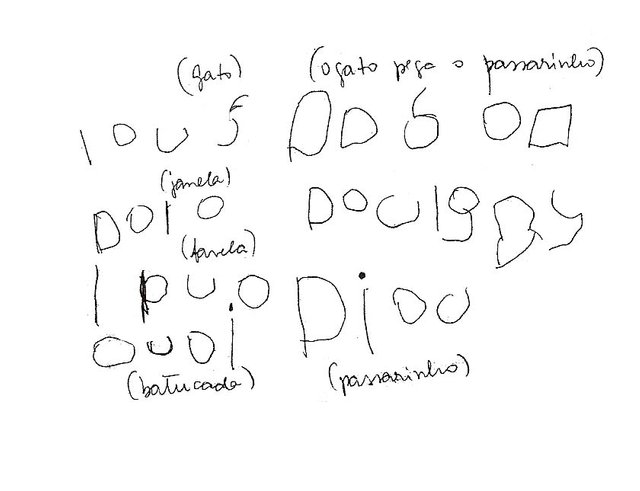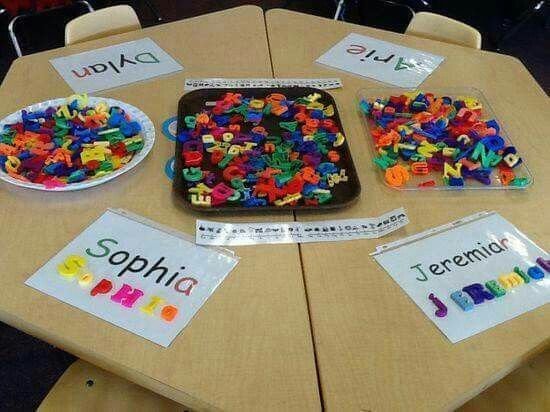Constructivist literacy: how does the child learn with this method?
Constructivist literacy: how does the child learn with this method?
The operation of new methodologies generates many doubts in the school community, for this reason, I decided to talk about constructivist literacy in today's publication.

What is constructivist teaching?
The basis of constructivist thinking is to consider that there is a construction of knowledge and, for that to happen, education should create methods that stimulate that construction, that is, teach how to learn to learn.
This pedagogical line understands that learning occurs jointly between teacher and student, that is, the teacher is a mediator of knowledge that students already have in search of new knowledge creating conditions for the student to live situations and interactive activities, in the which, he himself will build the knowledge.
The child and constructivist literacy.

To better explain the functioning of the constructivist literacy method and how the child learns through them, I list their main characteristics below.
- The educator as mediator
Once the new knowledge is developed from previous knowledge, it is very important that the student's rhythm is respected.

This means that the educator must be prepared to recognize and identify the stage in which his student is, since this will determine the new stimuli and indicate what the next step that his student must reach in the literacy process.
Therefore, when the child writes without adapting to the formal patterns of writing, this phenomenon should not be evaluated as a mere orthographic error to be discarded or reprimanded. On the contrary, the attentive look of the constructivist educator knows that "error" can justify the child's hypothesis for the representation of sounds in writing. In other words, one learns with error insofar as it indicates the stage of literacy in which the student finds himself and serves as a guide for the type of activity he needs to progress.

- Learning by practice
As experience is a very important point for constructivism, students should be encouraged to read and write quite frequently, even to what they probably will not know how to write.
If other methods encourage students to read very simple or simplified texts for didactic purposes, and write very short and simple texts to avoid mistakes, constructivist literacy will encourage students to interact with simple but authentic texts. The difficulty or the error will not be seen as obstacles to be avoided, but as opportunities to learn, to challenge oneself.

This means that in his experience with reading and writing, the student does not face artificial barriers. On the contrary, he is stimulated to face writing with naturalness, having the opportunity to experience it in its complexity and to develop cognitively when creating, testing and reworking his hypothesis in relation to the functioning of language.
- The importance of previous experiences
The child does not have school as the only place of learning. Your home is also a very important learning space.
The contact of the child with written materials at home, although not a determining factor for the process, also enriches his experience and influence on his intimacy with writing.

In a literacy class, each student will be the bearer of a different experience, being able to move forward and backward in their hypotheses until they have mastered the linguistic code completely. The contact with the literate world can be more or less intense, depending on the example and the stimulus it receives from the family.
A child who habitually hears the reading of stories before sleeping, for example, will probably develop a closer relationship with literary texts than another child who has not experienced such experience. In addition, children will be able to find different media and text genres on plaques, posters, books, newspapers, magazines, comics, games or the internet inside and outside the home or school.

- The need to follow closely
Keeping in mind the stages of reading and writing acquisition, the teacher must always be attentive to provide a new activity to his student, something that does not discourage him for not bringing anything new, nor the frustration for being far beyond of, their level of literacy.
Children, in the effort to communicate, also look for different ways of written language. Many produce drawings that should not be ignored by their teachers either. These other ways of meaning do not necessarily coincide with the learning of writing. At the end of the day, in contemporary communication, it is quite common to see words and images appear on one side.

Literacy and other developments of the concept of constructivism in education are some examples of methodologies that emerge as alternatives to traditional school methods. The importance of knowing them is justified by the changes in the cultural values of society and consequently the skills that we believe are relevant for the development of our children.
source of information:
http://www.tcnj.edu/~evangeli/constructivism.htm
https://files.eric.ed.gov/fulltext/EJ1099088.pdf

If you would like to support the educational community by delegating to @steemiteducation, please click on any of the following links. This will ensure that more teachers are supported on a daily basis.
100SP 200SP 300SP 400SP 500SP 750SP 1000SP 2000SP 3000SP 4000SP 5000SP 10,000SP 25,000SP